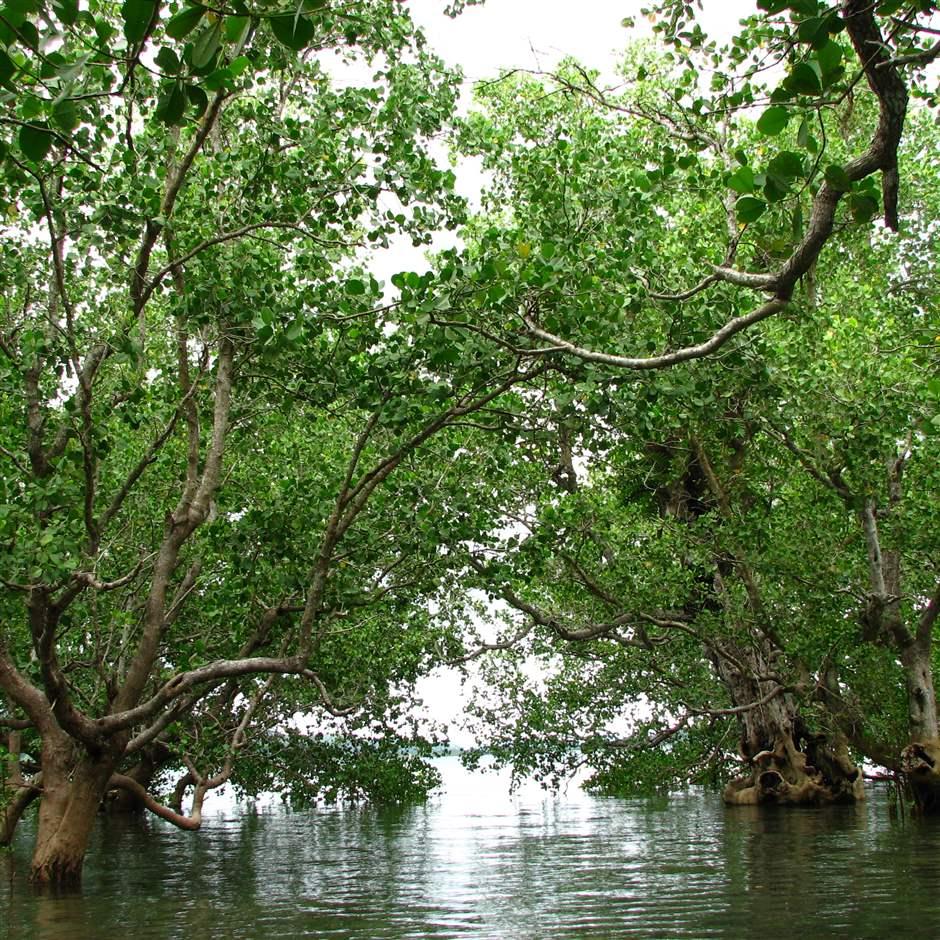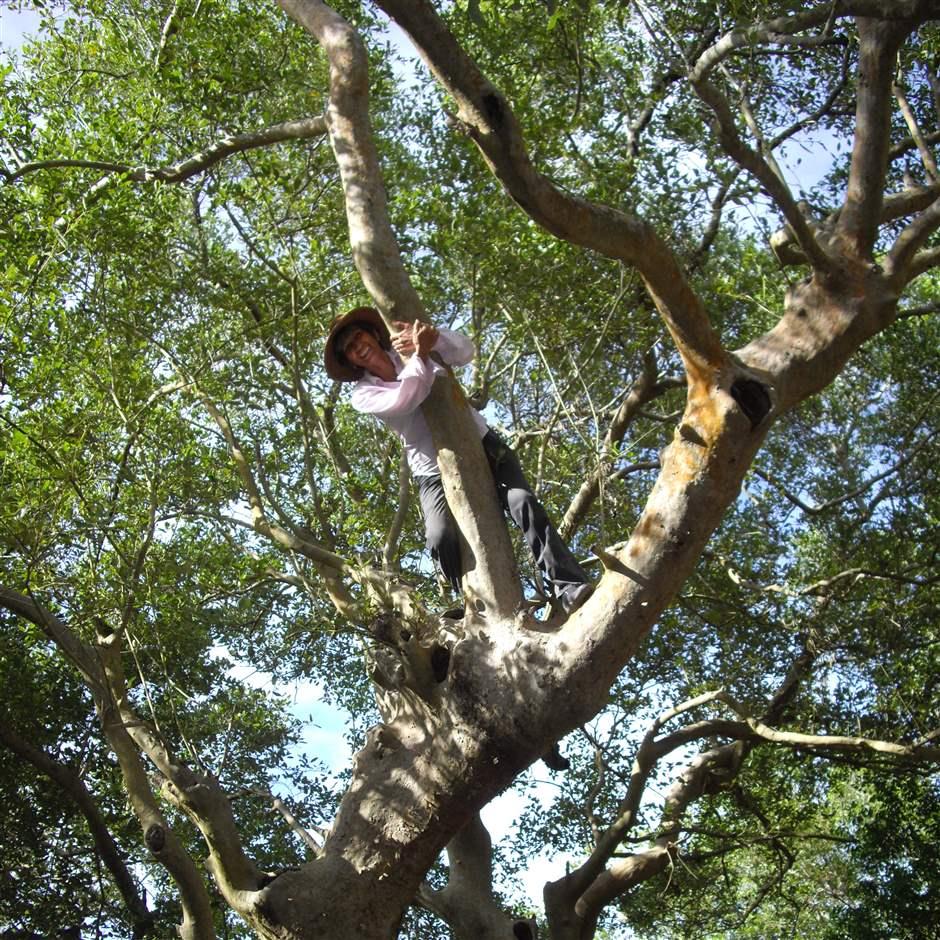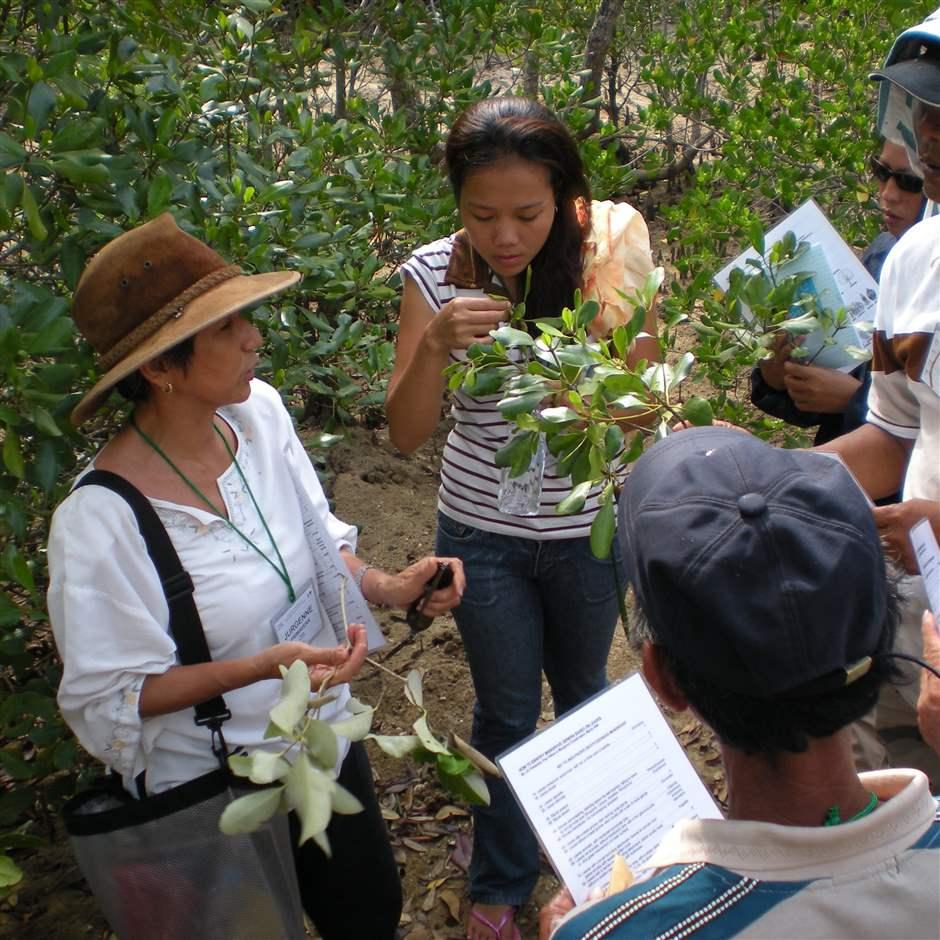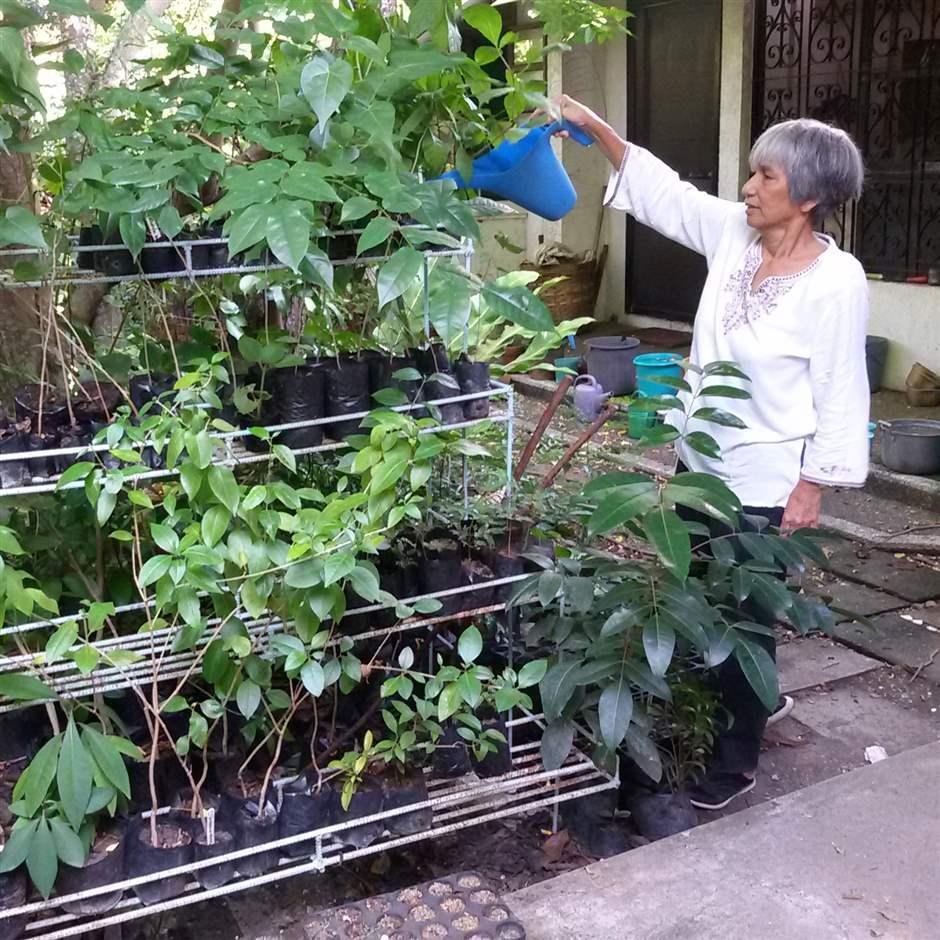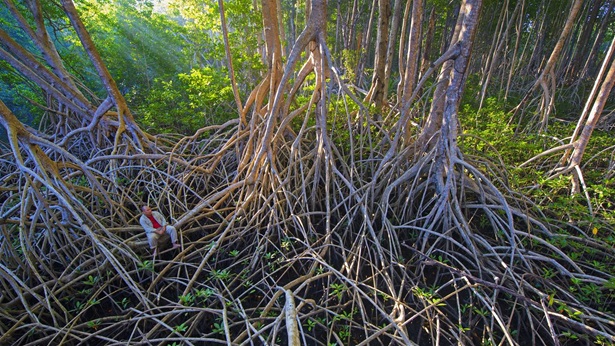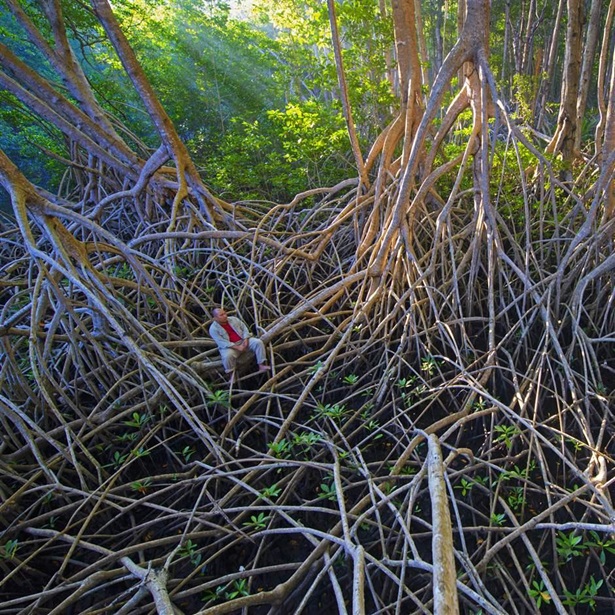Mangroves Mitigate Effects of Climate Change Provide Local Economic Benefits
Pew marine fellow Jurgenne Primavera shares insights from decades spent studying and protecting these vital coastal habitats
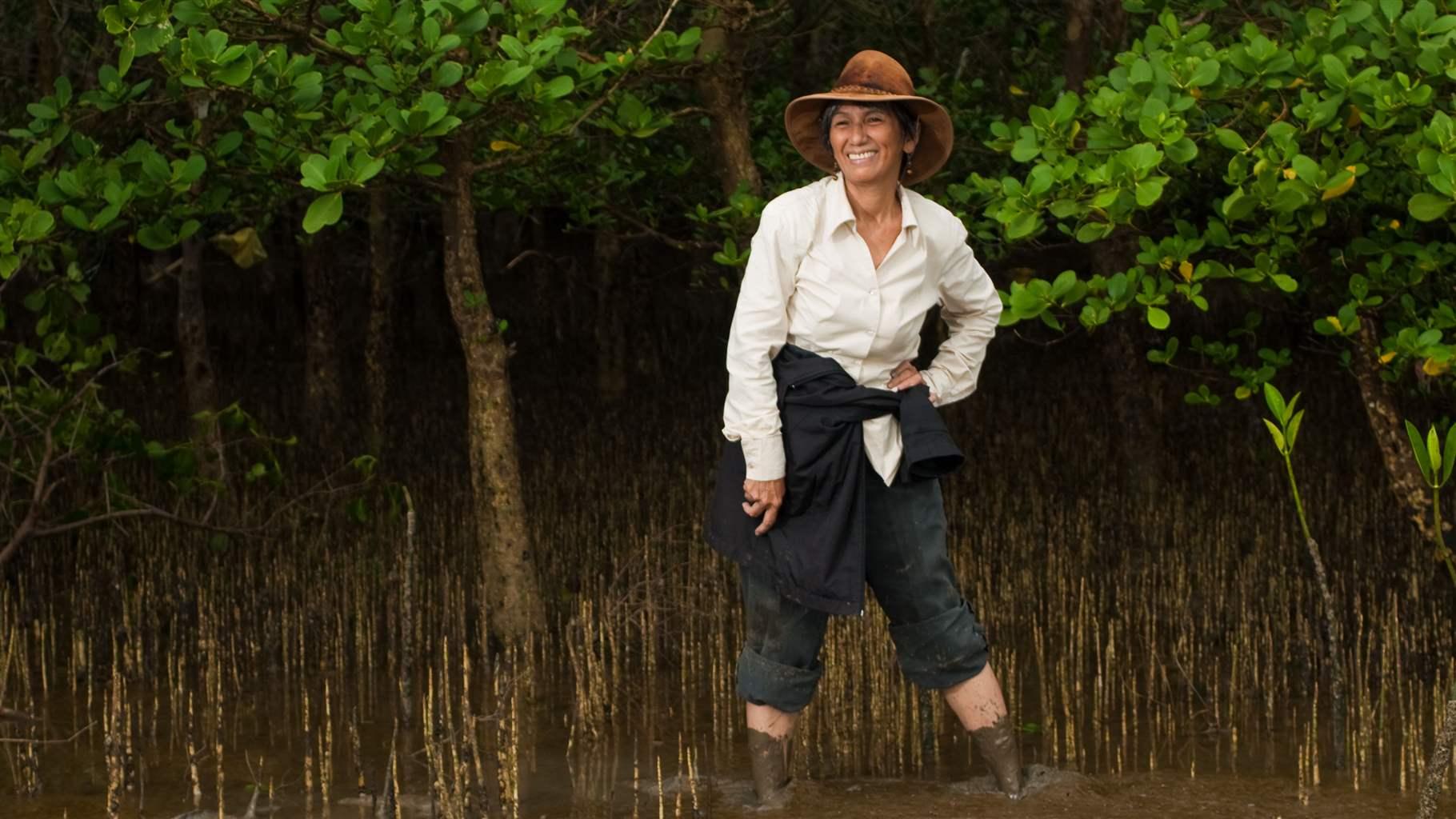
Mangroves—trees and shrubs that grow in briny waters along coastlines in tropical and subtropical regions worldwide—play many important roles in supporting coasts and coastal communities and economies around the world, among them providing coastal protection, filtering water, and supporting the livelihoods of people who live in and around them. Yet despite their importance, more than a quarter of the world’s mangrove forests have been lost over the past several decades to aquaculture and real estate development, local harvesting, and other pressures.
Jurgenne Primavera, a marine scientist and 2005 Pew marine fellow from the Philippines, has spent decades collaborating with local governments and communities to study, restore, protect, and champion mangroves in the Philippines and beyond.
This interview, timed to mark the International Day for the Conservation of the Mangrove Ecosystem on July 26, has been edited for clarity and length.
Q: What benefits do mangroves provide to coastal communities?
A: Mangroves provide many goods and services, but especially food. Many fish species permanently reside in mangroves, as do shellfish, bivalves, and other organisms that represent food security for people in and near mangroves. This is especially true for times like these: During the pandemic, many people have limited resources and supply chains have been disrupted. But people can still go out to the mangroves during low tide and look for shellfish.
Mangroves are also nurseries for fish, shrimp, and crabs that spend their juvenile stages in the mangroves. When they’re older they go back out to the open sea, where they’re fished by trawlers and other commercial fisheries.
Q: What about in addition to food?
A: Mangroves provide coastal protection. In the Philippines we can have 20 major storms a year, and tsunamis or even just storm surges can reach 4 kilometers inland. That’s nearly 2½ miles. Mangroves protect coastal communities and those further away from the coast from the full force of these storms.
And, of course, we also have the services mangroves provide, especially when we think about climate change.
Q: How do mangroves offer protection against the impacts of climate change?
A: We know that climate change is driven by greenhouse gases, mainly carbon dioxide. The more forests that can capture and use carbon dioxide for photosynthesis, the faster these greenhouse gases will be removed from the atmosphere, which benefits society as a whole. And compared to other types of forests, mangroves have very high rates of carbon capture. Most mangrove carbon is found in the forests’ belowground biomass, mainly the roots, and in sediments.
Q: How did your Pew marine fellowship support your work?
A: I became a Pew marine fellow in 2005. The fellowship helped bring to reality many of my dreams to rehabilitate and protect mangrove sites. It gave me the means to act on the things I envisioned, like building footwalks through the mangrove forests, organizing seminars, traveling to different mangrove sites, and starting programs with local governments. It was a catalyst.
Q: What sparked your interest in these ecosystems?
A: I started my career in aquaculture, shrimp culture research specifically, and did that for 37 years in the Philippines. That work took me to the ponds where shrimp were grown. The more I saw these ponds, the more I saw these weird-looking trees—mangroves— lining the ponds. And I realized, to my dismay, that mangrove forests had been cut and excavated to build these ponds.
But really it goes back to my childhood in Agusan, Mindanao, in the south of the country. As a child, I climbed trees and even then, my affinity for trees was very strong. Now, I’m 75 almost, and I still climb all types of trees, including mangroves!
Q: Can you tell us one story that captures your passion for mangrove forests?
A: About 20 years ago, my assistant and I first visited a magical mangrove ecopark on Panay Island. We were so engrossed by the diversity we were seeing: 27 different mangrove species with trees that ranged from seven to 800 years old. Some are 20 meters high—that’s just over 65 feet—and 9 meters, or nearly 30 feet, in diameter.
Before we knew it, we lost track of time and the sun was setting. We turned to our local guide to help us get back to the road, and the guide confessed having never been to this place before! Now imagine: We’re in the jungle in a place that people don’t visit at all! We went around and around in circles and finally came across the road. My interpretation is that the forest spirits felt our intentions were good and showed us the way out. Some of my friends say that I’m a superstitious scientist, but it happened and there were three of us to witness!
Q: Tell us more about your work with local governments and communities to protect mangroves in the Philippines.
A: In the Philippines, when my team and I would go to a potential mangrove project site, we would first go to the mayor and local community leaders, because we knew that for mangrove protection to succeed, we would need local support. The local community members are the de facto managers on the ground. And our record over the years, in terms of training and empowering both local communities and local officials to protect remaining mangroves and rehabilitate degraded ones, has been mostly successful.
Engaging youth is also very important. I’m really a teacher at heart: Before I did my aquaculture research, I taught undergrad for 10 years. And even once I began doing just pure research, I tried to take every opportunity to engage students. I would host field trips or invite high school classes into the field with us and introduce them to mangroves. I believe young people are very open: You take them to the mangroves and show them how beautiful the trees are, how beautiful the mud is, and they see these things through your eyes. And that’s a beautiful thing.
Q: What are your top three tips for students or early-career scientists interested in studying mangroves?
A: Know and love, document, and share.
Know and love: You can’t love something if you don’t know it. So, you must know the mangroves. You must know the trees, know the mud, know the mosquitoes, know the tides, and know about the people who live in mangroves.
Document: You must document whatever you do there. This can be something as basic as taking photos. At the very least you can share your photos with your fellow humans; social media is perfect for this. Documentation can also be a scientific paper. Report what you learn.
Share: It takes effort, but share what you know and learn. In my case, talking to the media and presenting at conferences is important. I’ve given around 350 personal and virtual talks in the Philippines and abroad (30%) over the last 40 years! So, before the pandemic, I was into my 14th passport, because the pages of my passport fill up fast!
Q: What’s next?
A: Here in the Philippines, deforestation is a major, major problem. We’ve lost 80% to 90% of our forests. With the Zoological Society of London, we started a project looking at what we call mangrove associates, which are ecosystems—such as native beach forests—that border mangroves. You find beach forests above the high tide line, and together with mangroves, they form coastal greenbelts that provide storm protection. And these trees are survivors—they grow in the hot sun, with little fresh water, and strong winds—and they reproduce quickly. They should be part of reforestation efforts.
I have a nursery at home where we’ve planted more than a hundred different species of native trees, half of which are different beach forest tree species. Starting in 2008, we outplanted the seedlings to a 3-hectare tree park that I purchased with retirement pay from my former research job, and some species have produced flowers and fruits. For the past five years, I’ve been distributing the seeds to native tree groups all over the Philippines. So that’s what’s keeping me busy.
